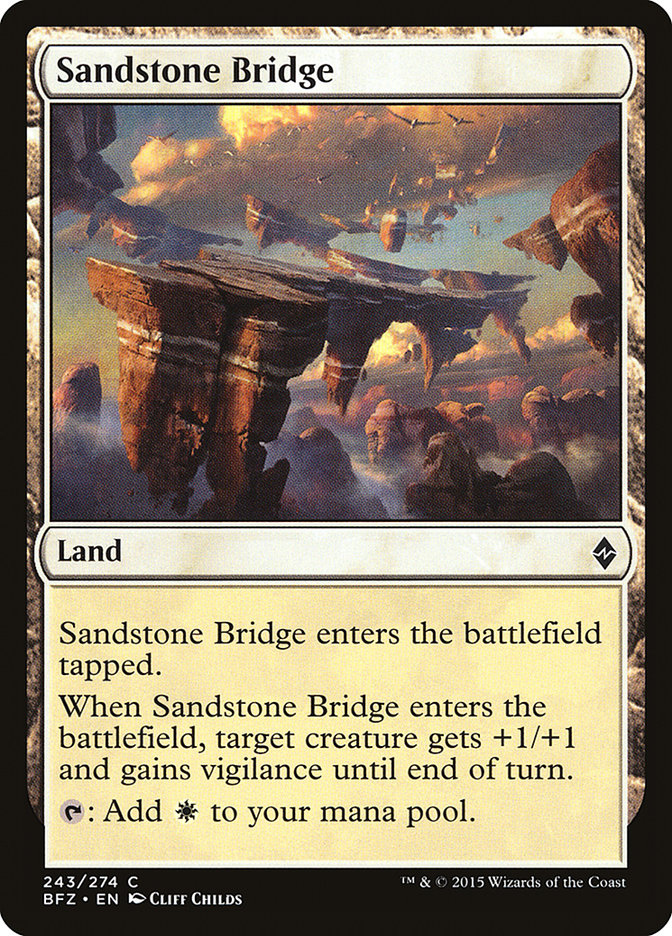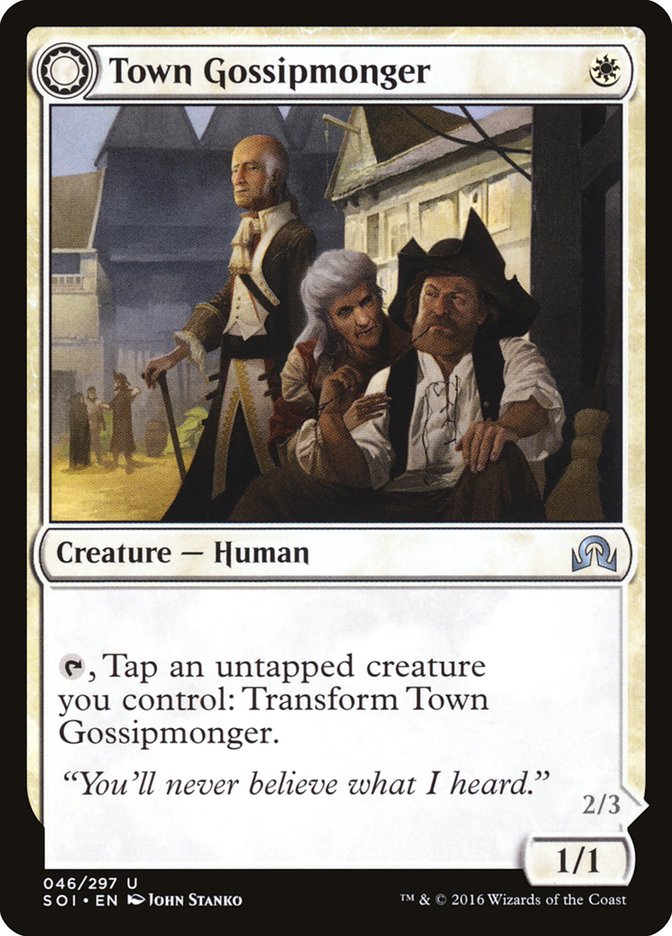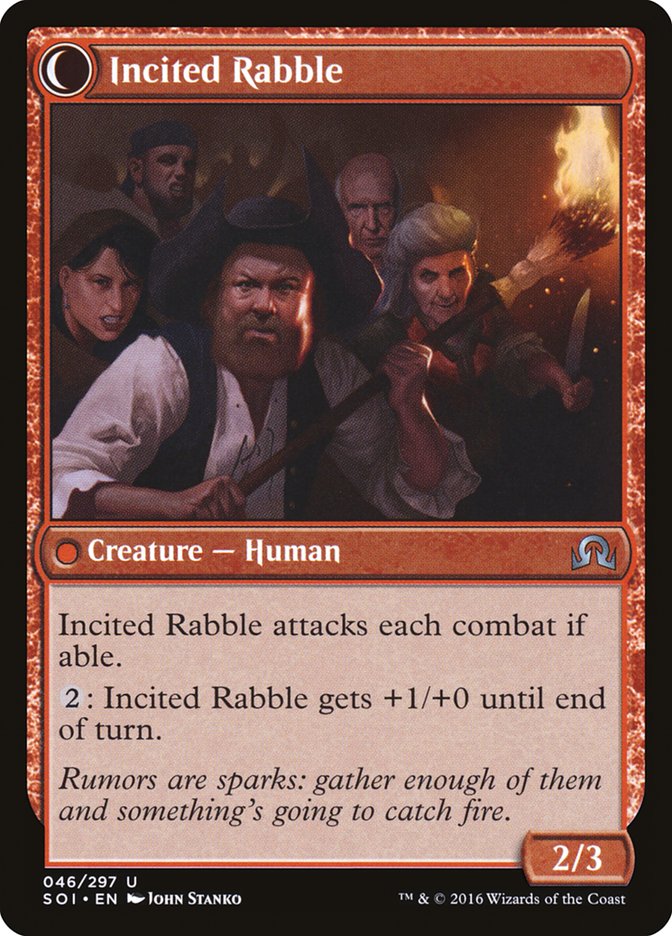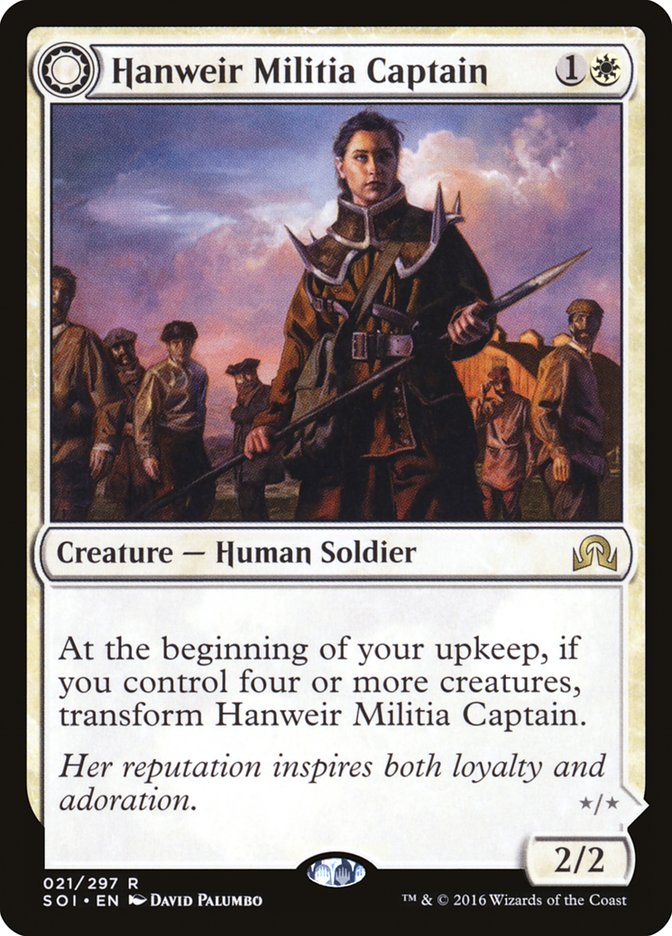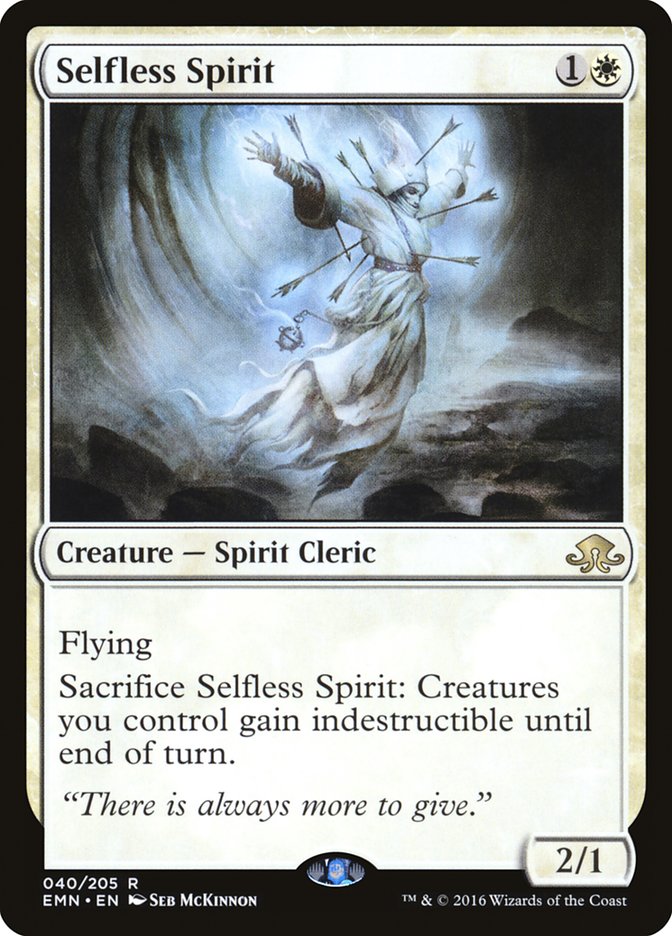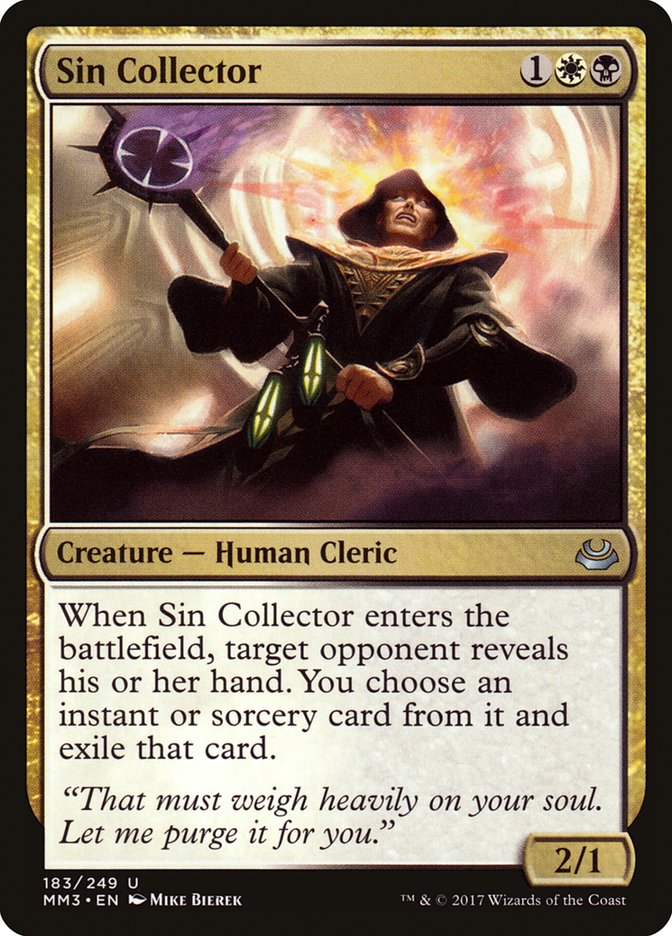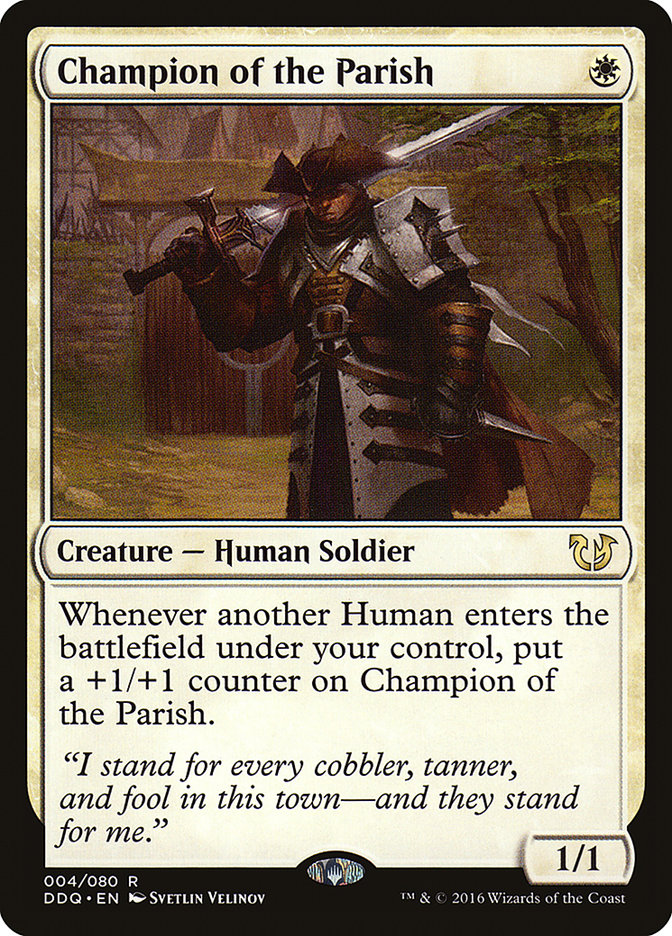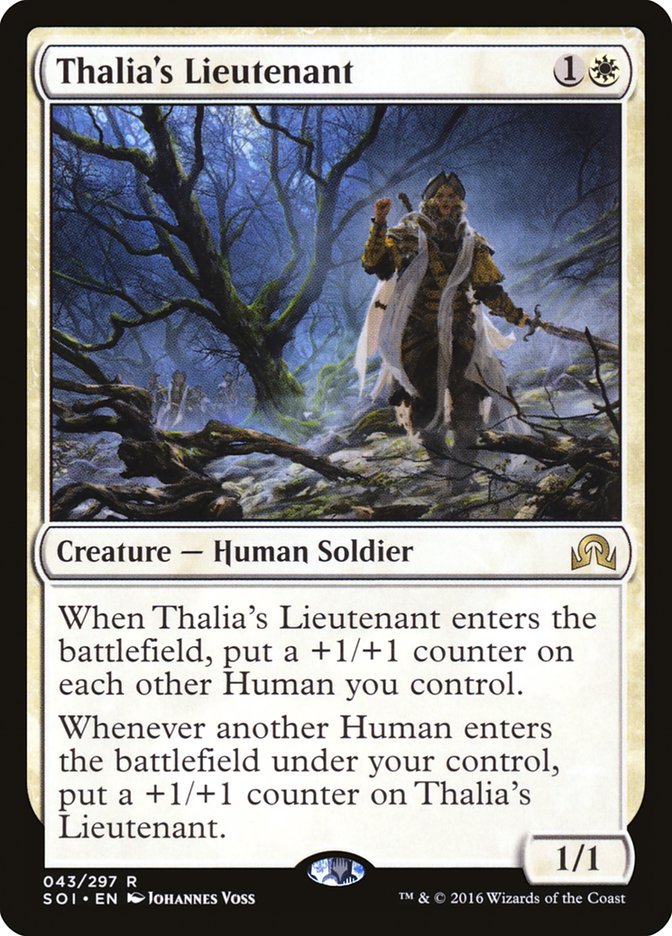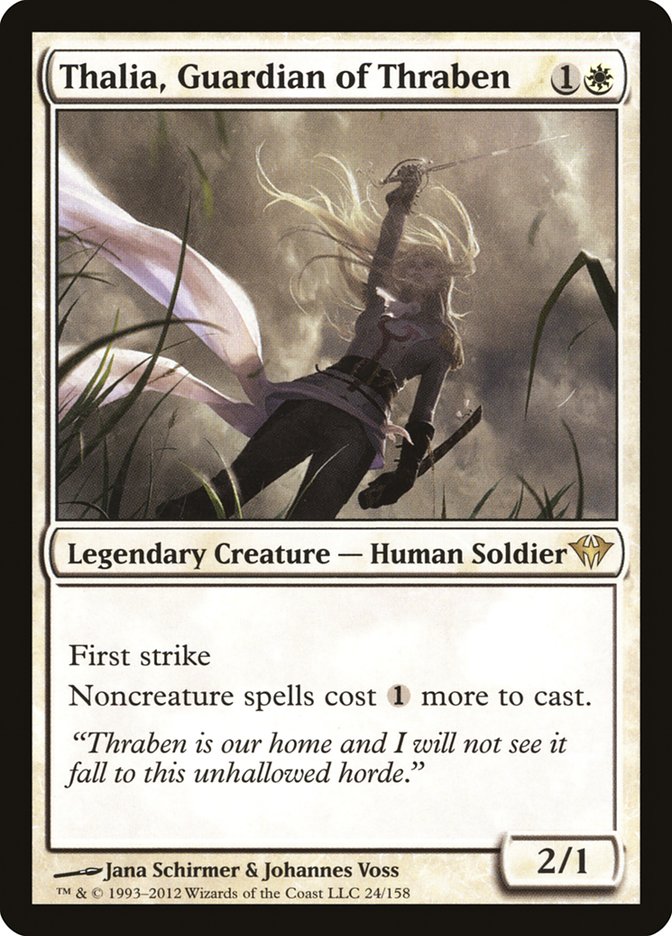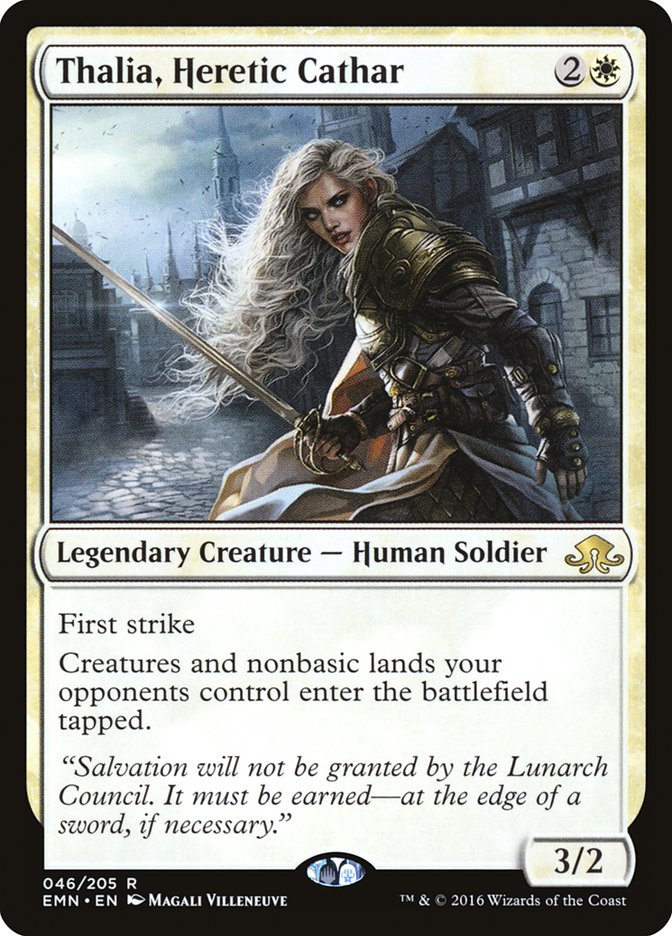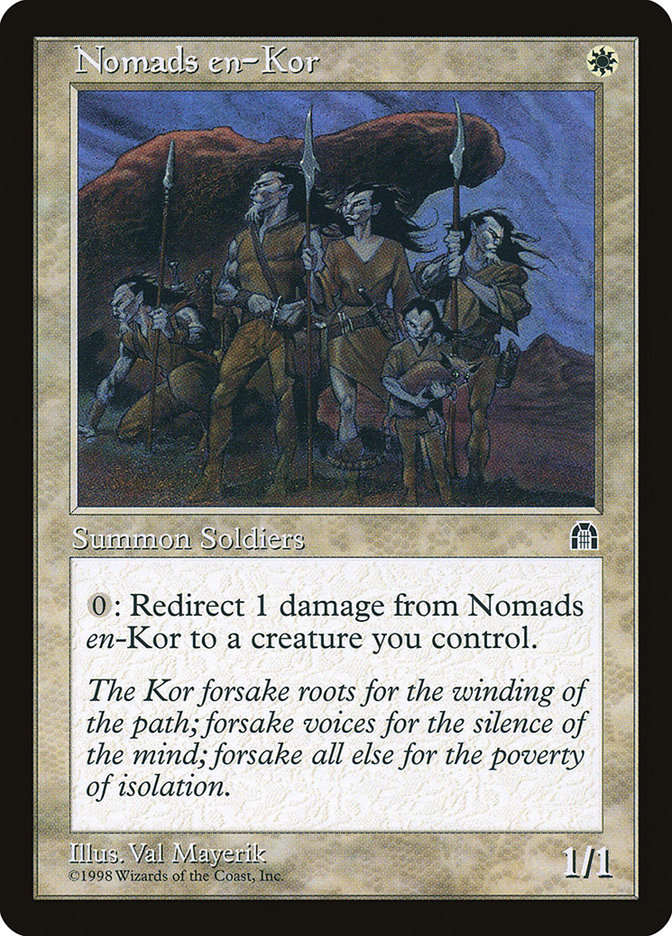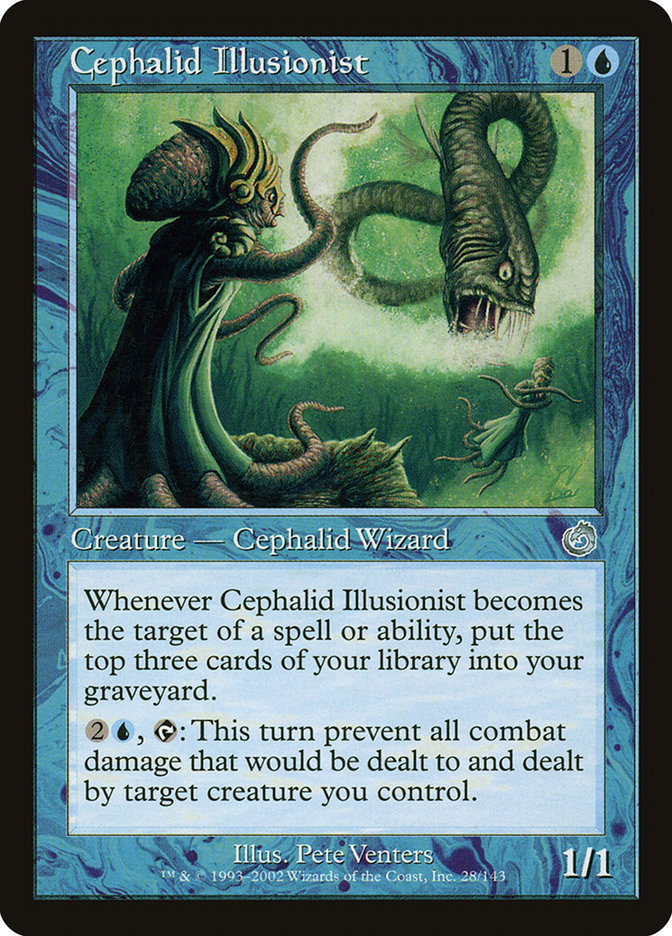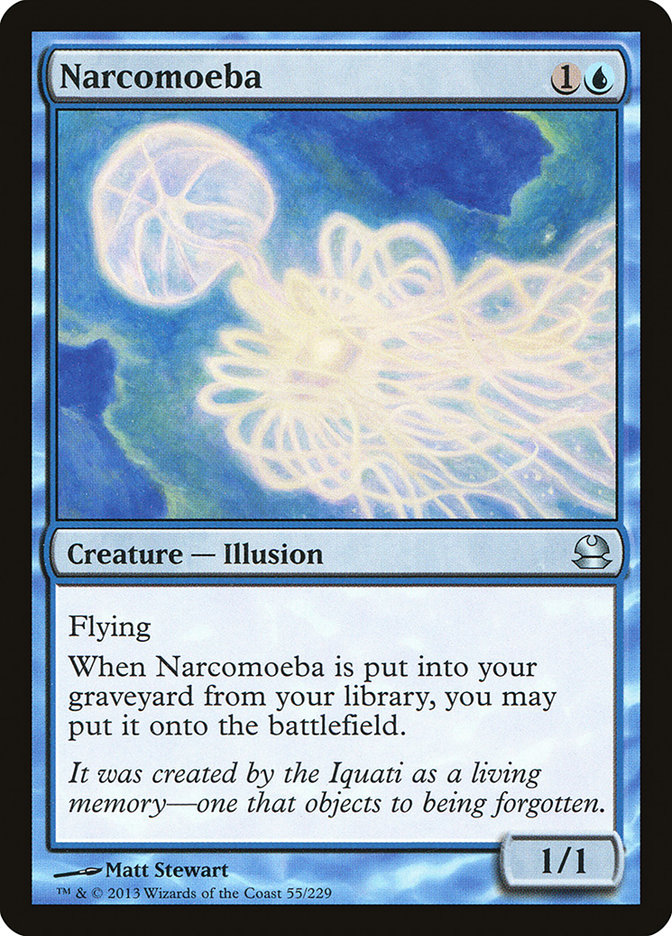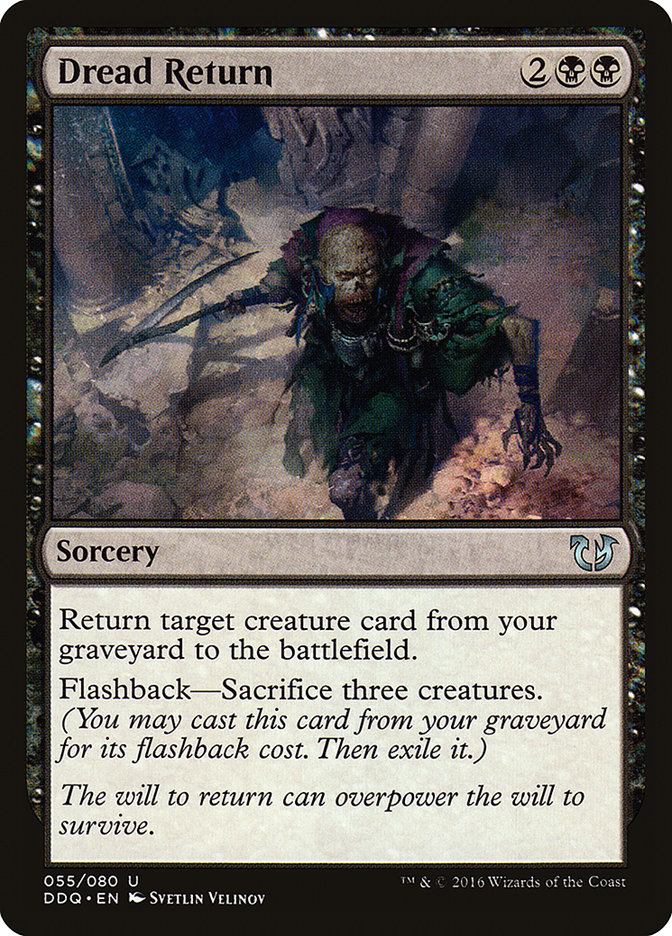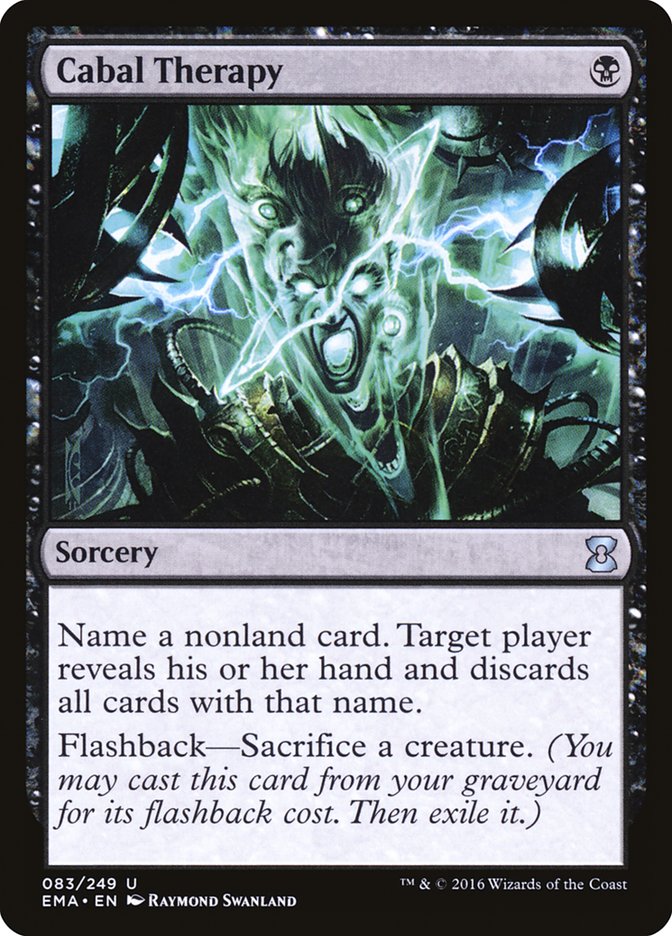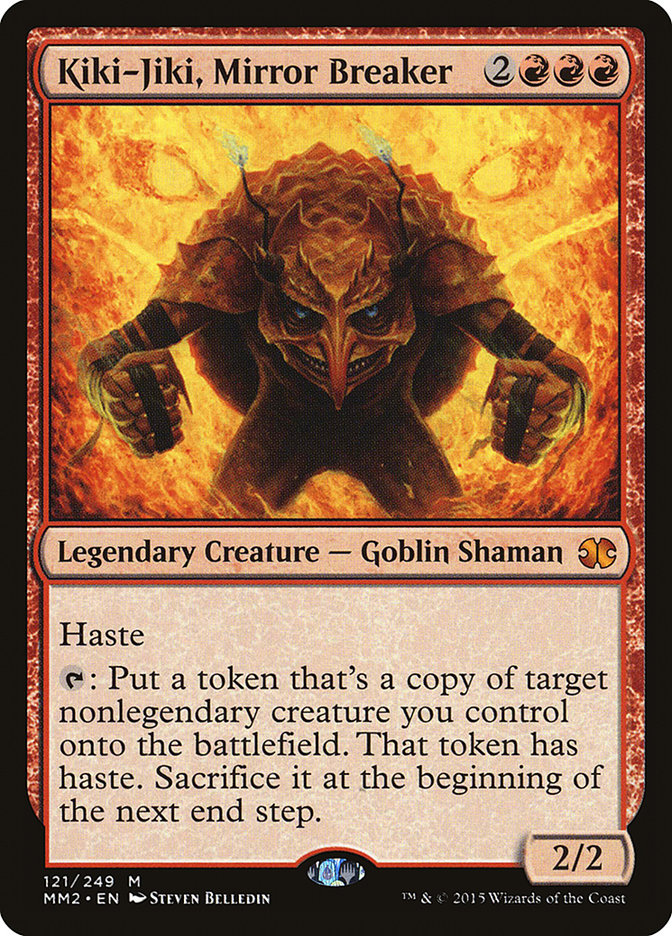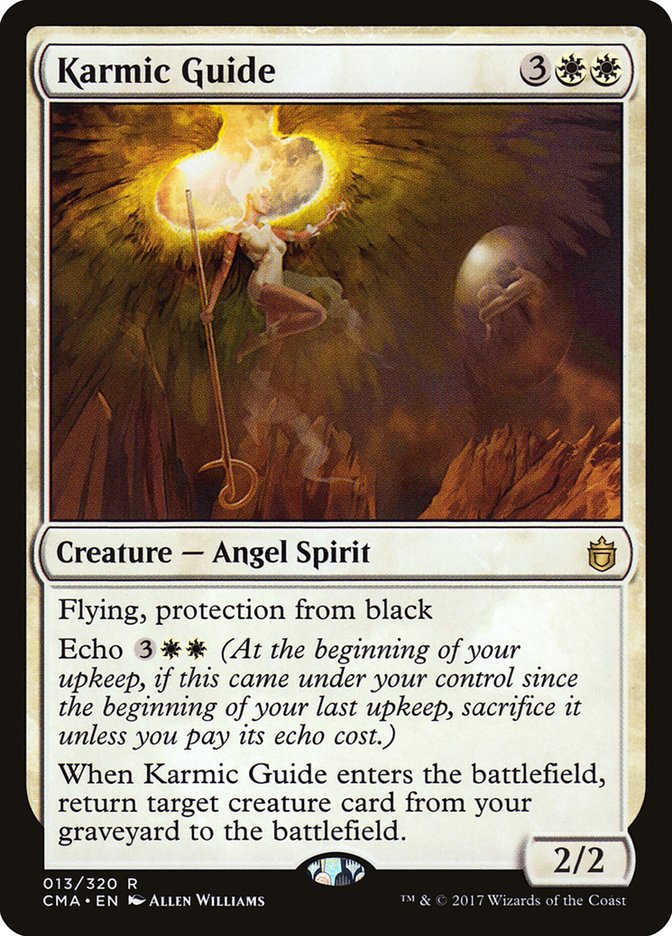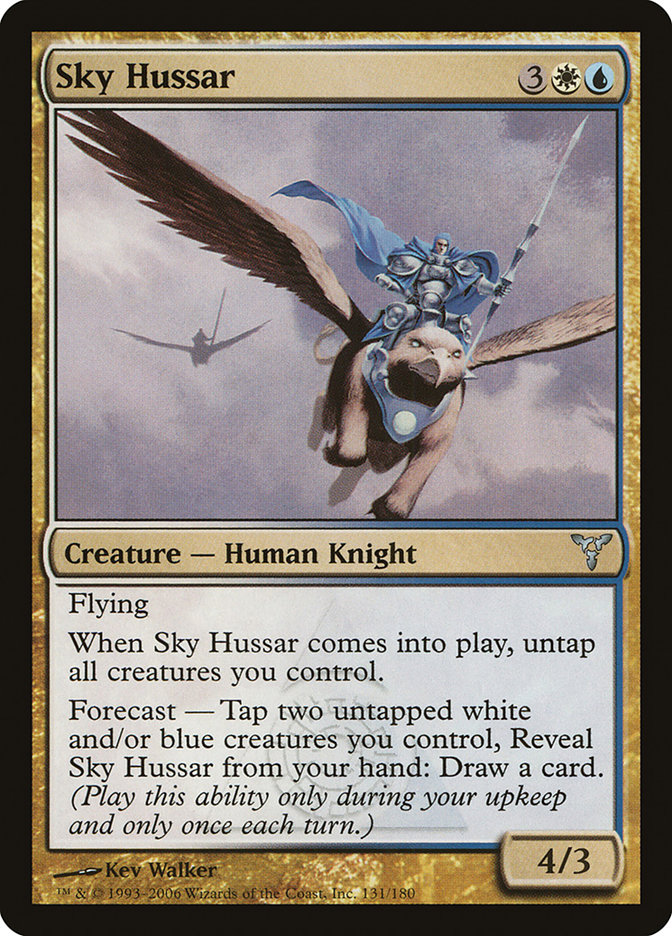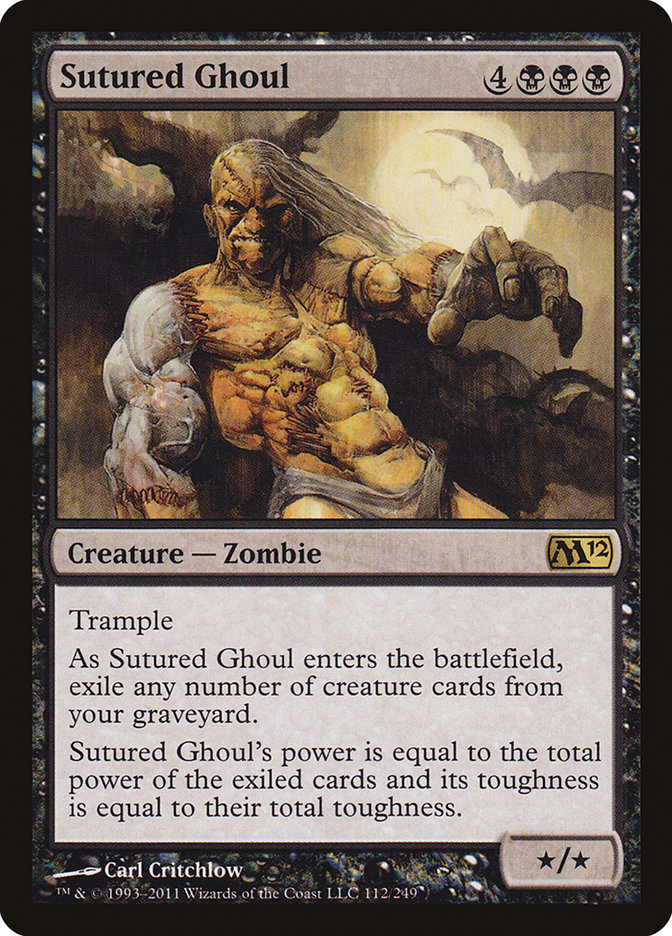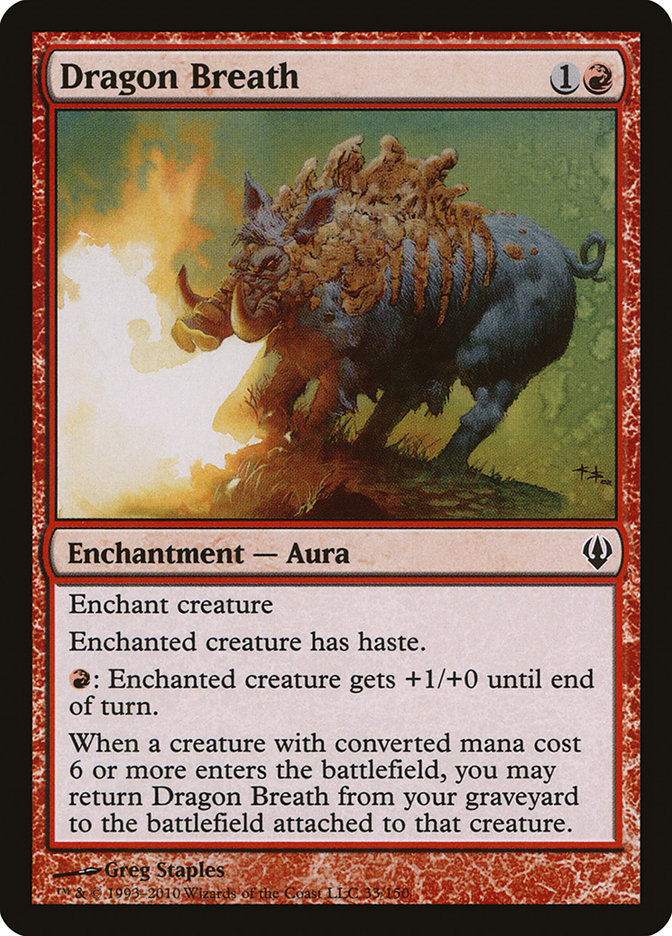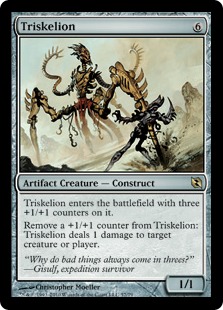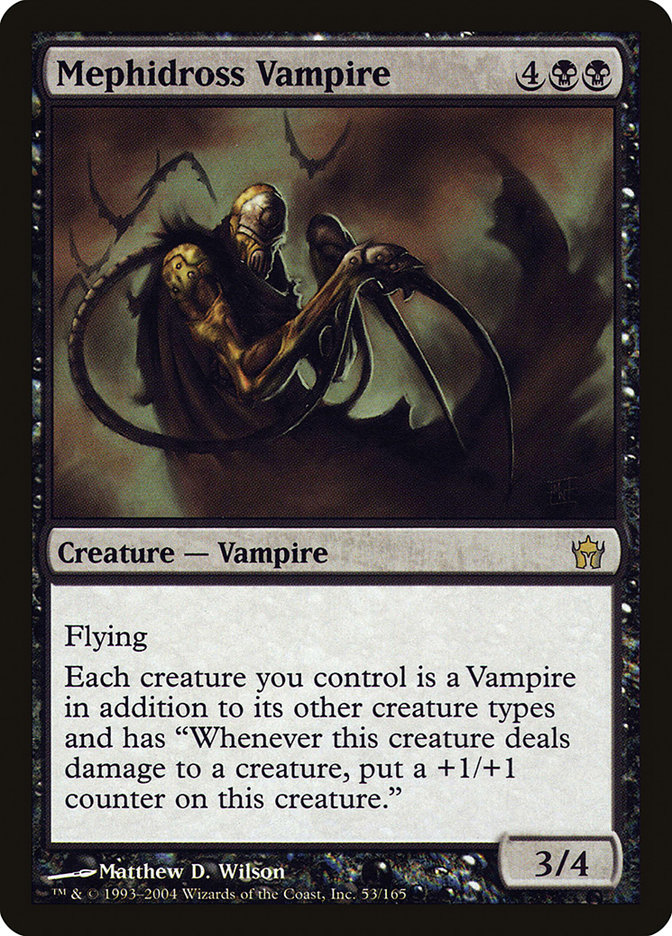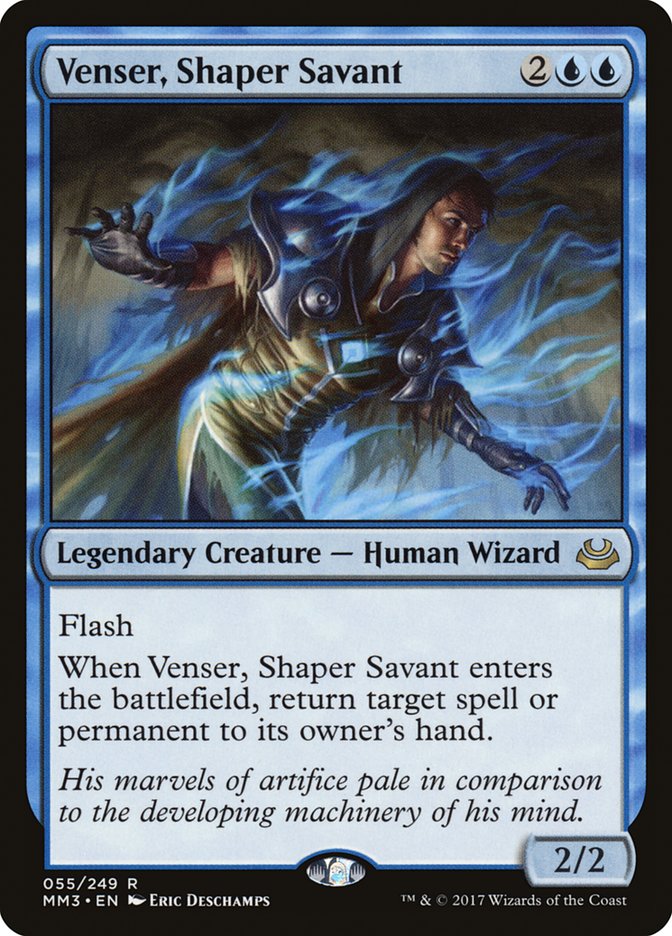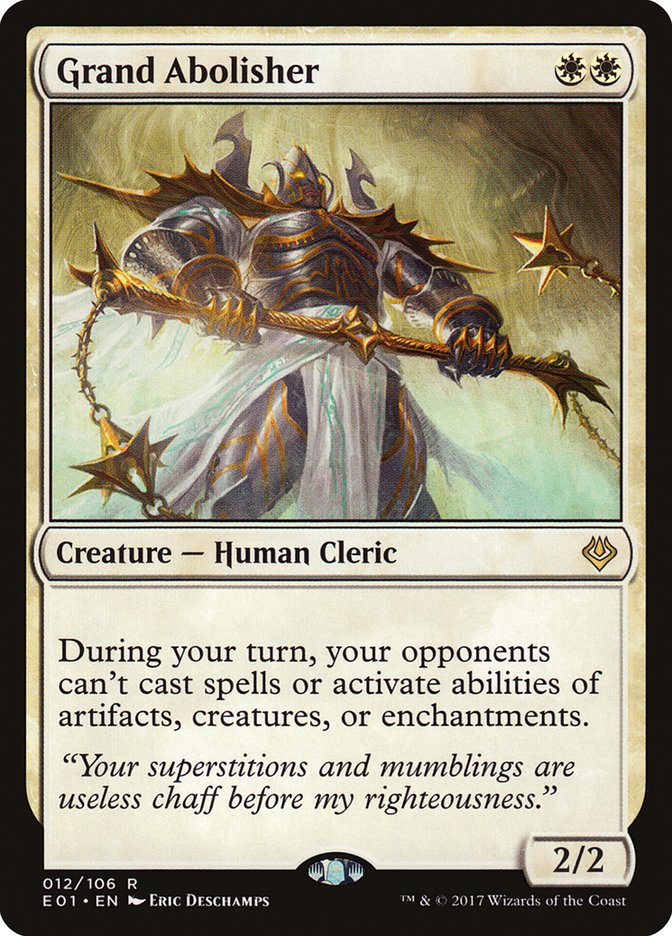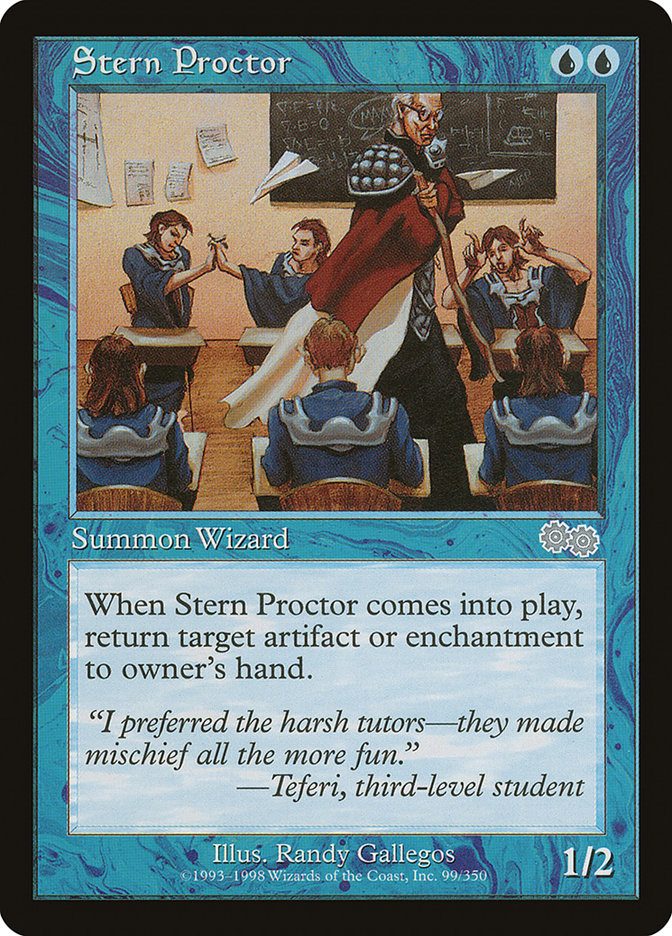With the multi-format Grand Prix Las Vegas as well as the multi-format SCG Tour Invitational on the horizon, now is a fine time to have a wide-focus look at Magic. Fortunately enough I’ve found a deck in each of Standard, Modern, and Legacy that has piqued my interest.
One Last Hurrah for Humans
Creatures (30)
- 4 Expedition Envoy
- 4 Thraben Inspector
- 4 Thalia's Lieutenant
- 2 Hanweir Militia Captain
- 4 Town Gossipmonger
- 1 Thalia, Heretic Cathar
- 3 Selfless Spirit
- 4 Glory-Bound Initiate
- 4 Gust Walker
Lands (4)
Spells (26)

How did I miss Sandstone Bridge?
Seriously, the deck needed something to … bridge… the gap between stalling on one land and flooding out. It also needed a little more oomph to push take advantage of the exert mechanic on Gust Walker and Glory-Bound Initiate. Before, the deck had to lean heavily on Always Watching for that effect, and without one, Gust Walker just didn’t have the oomph I was looking for in a Standard card.
For a rushdown Mono-White Humans deck to work, you absolutely must have a critical mass of one-drops. Cartouche of Solidarity fills the role while allowing some favorable attacks and blocks that the deck wouldn’t otherwise have early without the ability to cheaply size and grant first strike. Of course, the token that Cartouche of Solidarity creates isn’t a Human, but rather a raceless Warrior token with vigilance that doesn’t synergize with Thalia’s Lieutenant or Always Watching.
Town Gossipmonger into Sandstone Bridge plus another one-drop allows for Town Gossipmonger to transform into Incited Rabble and attack for three, four if the one-drop was a Cartouche of Solidarity. A respectable opening start that wasn’t possible before.
With more one-drop creatures, Hanweir Militia Captain gets better. Now it’s more likely to have four creatures by turn 3 and have a chance of transforming into Westvale Cult Leader early.
Trial of Solidarity is an Anthem effect like Always Watching that buffs token creatures as well. It’s also a fine addition now that there are four copies of Cartouche of Solidarity, effectively becoming the bit of late-game gas that is lost without Gryff’s Boon.
Selfless Spirit helps against battlefield wipes like Chandra, Flamecaller and is protection from getting two-for-one’d when trying to resolve a Cartouche of Solidarity. Along with Gust Walker, you can pose a respectable air force.
If there is a lot of Liliana, the Last Hope and Ishkanah, Grafwidow going around, things can be tough (but not unbeatable) for the Mono-White Humans deck. I like the look of this build more than the previous ones, so hopefully there’s enough here for the deck to make a comeback.
Modern’s Best Tribal Deck?
Creatures (31)
- 4 Noble Hierarch
- 4 Champion of the Parish
- 4 Avacyn's Pilgrim
- 2 Mayor of Avabruck
- 3 Thalia, Guardian of Thraben
- 3 Sin Collector
- 4 Reflector Mage
- 4 Thalia's Lieutenant
- 3 Thalia, Heretic Cathar
Lands (19)
Spells (10)

Unsurprisingly, when it looks like there’s a decent Humans deck in Modern, I’m all over it. Hall of Famer Olle Råde tends to play a similar style to me, so I’m curious to explore a deck that he’s successful with, since it likely plays to my strengths. After all, he did most of the early heavy lifting getting Legacy Infect into fighting shape by grinding Magic Online.
The thing is he’s not the only one putting up results this time. Upwards to ten Magic Online users have gone 5-0 in Modern Leagues recently with four-color Humans builds, all with very similar lists.
Two big finds really made this deck shine: Sin Collector and Collected Company.
Sin Collector is just extremely good right now. We see Tidehollow Sculler and Thought-Knot Seer doing work in Modern, and Sin Collector is right on par. With Collected Company, you can even nab a freshly drawn sorcery spell in the opponent’s draw step before they have a chance to cast it.
Having utility on a creature means you don’t have to commit as many slots to noncreature spells. Reflector Mage acting as a removal spell also falls into this camp. From the sideboard, Izzet Staticaster, Meddling Mage, and Kambal, Consul of Allocation provide similar functions.
Collected Company is no stranger to Modern and finds its way into a variety of combo and tribal decks, from Elves to Slivers. What Collected Company does for Humans is throw off combat math, allow you to play on the opponent’s turn if needed, and keep a saturation of Humans to make the most use out of Champion of the Parish and Thalia’s Lieutenant.
Champion of the Parish is a very swingy card. It’s great on turn 1 but a poor topdeck later. It also tempts you to overcommit to the battlefield, leaving yourself open to a sweeper.
Because Collected Company puts the creatures onto the battlefield simultaneously, they see each another. This allows the Human Company deck to build a massive amount of power very quickly.
I was favoring Elves with the Devoted Druid and Vizier of Remedies combo last week and saw this Humans build as a similar deck but without the ability to win on turn 3 with a combo. It turns out that the frailty of Elves is a huge liability that Humans doesn’t have. The mana creatures from Elves are fine attackers sometimes with Ezuri, Renegade Leader or multiple Elvish Archdruids, but they don’t impact the battlefield immediately when drawn. Each Noble Hierarch or Avacyn’s Pilgrim will immediately grow Champion of the Parish or Thalia’s Lieutenant, ensuring that your mana creatures are effective at more stages of the game.
The Thalia duo (or trio, even, if you count the Lieutenant) provides a Hatebear-esque element to the Humans deck without diluting the engine with non-creature spells. Sure, once in a while your Path to Exile will cost two mana or your Collected Company will cost five, but with eight mana creatures, you have more sources than the average deck and will probably have more than the opponent in most stages of the game.
Can a Humans deck compete in a Modern world where Death’s Shadow is so dominant? Maybe. It has some things going for it, namely being able to outsize the large creatures from Death Shadow decks. Human Company is fairly redundant with respect to what its cards do, so hand disruption like Inquisition of Kozilek and Thoughtseize are less likely to pick you apart. So far it’s winning on MTGO, but can it win #SCGCHAR this weekend? I’m looking forward to finding out.
Breakfast of Champions
Creatures (20)
- 1 Kiki-Jiki, Mirror Breaker
- 1 Shaman en-Kor
- 4 Nomads en-Kor
- 1 Karmic Guide
- 4 Cephalid Illusionist
- 1 Sky Hussar
- 3 Narcomoeba
- 1 Venser, Shaper Savant
- 1 Grand Abolisher
- 3 Recruiter of the Guard
Lands (13)
Spells (27)

Now, you may not have heard of Cephalid Breakfast before and are astounded by the ridiculous name. It was named during a time when breakfast cereals like Trix and Fruity Pebbles somehow became deck names too. A different era of Magic, ages ago.
A little-known fact is Joe Lossett’s first two SCG Tour Top 8s were both in Legacy, both with Cephalid Breakfast, and both resulted in him making the finals. He’s recently been streaming with his updated list with a decent amount of success. You can check out the original decklist from 2011 here.
So how does it work?
Whenever Cephalid Illusionist is targeted by anything, anything, you put the top three cards from your library into your graveyard. Nomads en-Kor and Shaman en-Kor have an activated ability that costs zero mana that can target Cephalid Illusionist as many times as you want. You end up intentionally putting your entire library into your graveyard. It’s all possible for just three measly mana, allowing you to win as early as turn 2.
Once your library is in your graveyard, things get interesting. The three Narcomeobas allow you to cast Dread Return with Flashback from the graveyard. Cabal Therapy makes sure the coast is clear. Once you’ve milled yourself, Nomads en-Kor and Cephalid Illusionist can be sacrificed as well, as they’ve already done their job. Sometimes you’ll need to target yourself with Cabal Therapy to get one of your combo pieces into the graveyard.
After Cabal Therapy has seen what’s up, the combo starts with Dread Return targeting Karmic Guide. Karmic Guide returns Kiki-Jiki, Mirror Breaker. Kiki-Jiki copies Karmic Guide. The Karmic Guide copy targets Sky Hussar. Sky Hussar untaps all of your creatures, including Kiki-Jiki. Kiki-Jiki now copies Sky Hussar to continue the loop.
There are multiple avenues to take after your deck is in your graveyard, like making a huge Sutured Ghoul and giving it haste with Dragon Breath. There are also many two-creature combinations that win the game, like Triskelion and Mephidross Vampire, but those require multiple Dread Returns and a lot of creatures to sacrifice.
The creature suite that Joe uses has a few advantages. It’s possible to win if your opponent shuts down your graveyard with something like Rest in Peace or Leyline of the Void. Conveniently, all three of the combo pieces cost five mana, meaning an Aether Vial on five works for all of them.
The early builds of Cephalid Breakfast needed to splash another color to have enough consistency. This was either red for Imperial Recruiter or green for Worldly Tutor. Now that Recruiter of the Guard is available, the deck is able to stick to just Esper colors.
Recruiter of the Guard gets your combo pieces as well as some key one-ofs for when the time arises.
Venser, Shaper Savant is there to deal with random problematic permanents in case they resolve. Night of Souls’ Betrayal, Rest in Peace, Ensnaring Bridge…whatever is stopping you. It’s not elegant, but it gets the job done.
Grand Abolisher makes the coast clear to do as you please by preventing your opponent from interacting with your combo on your own turn.
Stern Proctor is a cheaper version of Venser, Shaper Savant that can remove artifacts or enchantments that are halting your combo. The graveyard enchantments as well as Phyrexian Revoker and Pithing Needle are common targets.
So we have a combo deck that looks very susceptible to disruption as first glance. After all, it gets hit by graveyard hate, creature removal, hand disruption, counterspells… basically everything you can think of. However, since the combo is so cheap, you can assemble it very quickly and use the rest of your mana to push through your combo.
Would I take Cephalid Breakfast to a Grand Prix Las Vegas or to a Legacy Open? Sure. I’m a fan of creature combo decks and doing cool things. Joe Lossett is doing the coolest thing Legacy has seen in a long time.


